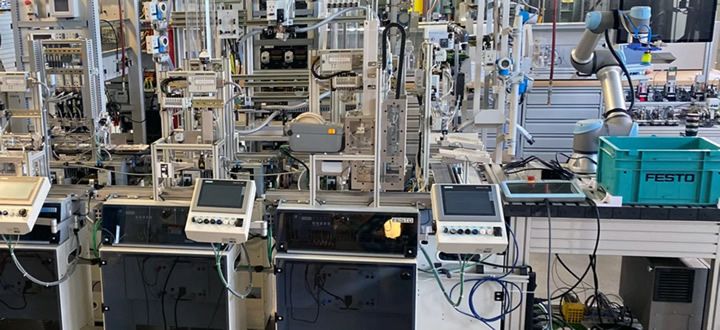The transformation of the agricultural sector requires a tech-savvy, skilled workforce. With tech innovation outpacing workforce development, the technical skills gap that currently exists is putting a strain on many agricultural communities.
 Closing the Skills Gap in AgTech - Hartnell College
Closing the Skills Gap in AgTech - Hartnell College

Case Study from | Festo
The Customer
Hartnell College in Salinas, California is setting a precedent in AgTech. Its Agricultural Business and Technology programs, including Manufacturing, with robotics and mechatronics training, provide students with skills that are valuable to businesses in California’s Central Coast and throughout the produce industry.
The Challenge
"We need 1,000 people right now that we don’t have," said Clint Cowden, Dean of Career Technical Education and Workforce Development for Hartnell College.
"The mechanical innovation is here, but who’s trained to use it?" Cowden added.
The Solution
After touring modern manufacturing facilities, Clint Cowden and his team began seeking out industrial learning equipment that would better educate and train Hartnell students for the future of work. "Instead of focusing on price, we focused on who can fulfill the skills training and build the biggest and best product. We knew we needed a partner who was up-to-speed on Industry 4.0, then we found Festo," Mr. Cowden explained.
Hartnell installed a customized Cyber-Physical Factory learning system from Festo in 2022. The simulated Smart Factory includes integrated logistics, communication, mechatronics, robotic assembly and troubleshooting capabilities. It’s fully networked and virtually integrated with HMI (humanmachine interface), PLCs, Data Acquisition, Collection and Analysis (SCADA) and wireless connection networking.
The Smart Factory also utilizes material handling robots with infrared vision capability for advanced robotic training.
The Value
To date, Hartnell is the only community college in California to offer an AgTech-focused mechatronics program. "There’s not a single college focusing on ag to mechatronics right now, we are it for the state, and probably for the Western United States," said Richard Chapman, an Agricultural Engineering Instructor at Hartnell.
With support from Festo, the program is closing a skills gap in the local workforce pipeline while establishing a precedent for educator-employer program models in AgTech.
The content & opinions in this article are the author’s and do not necessarily represent the views of AgriTechTomorrow
Comments (0)
This post does not have any comments. Be the first to leave a comment below.
Featured Product

